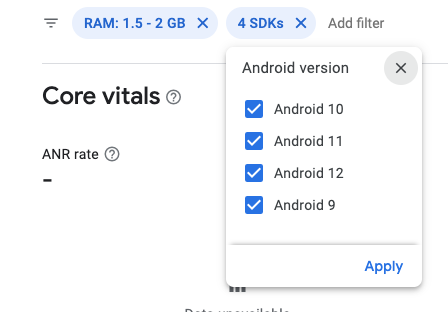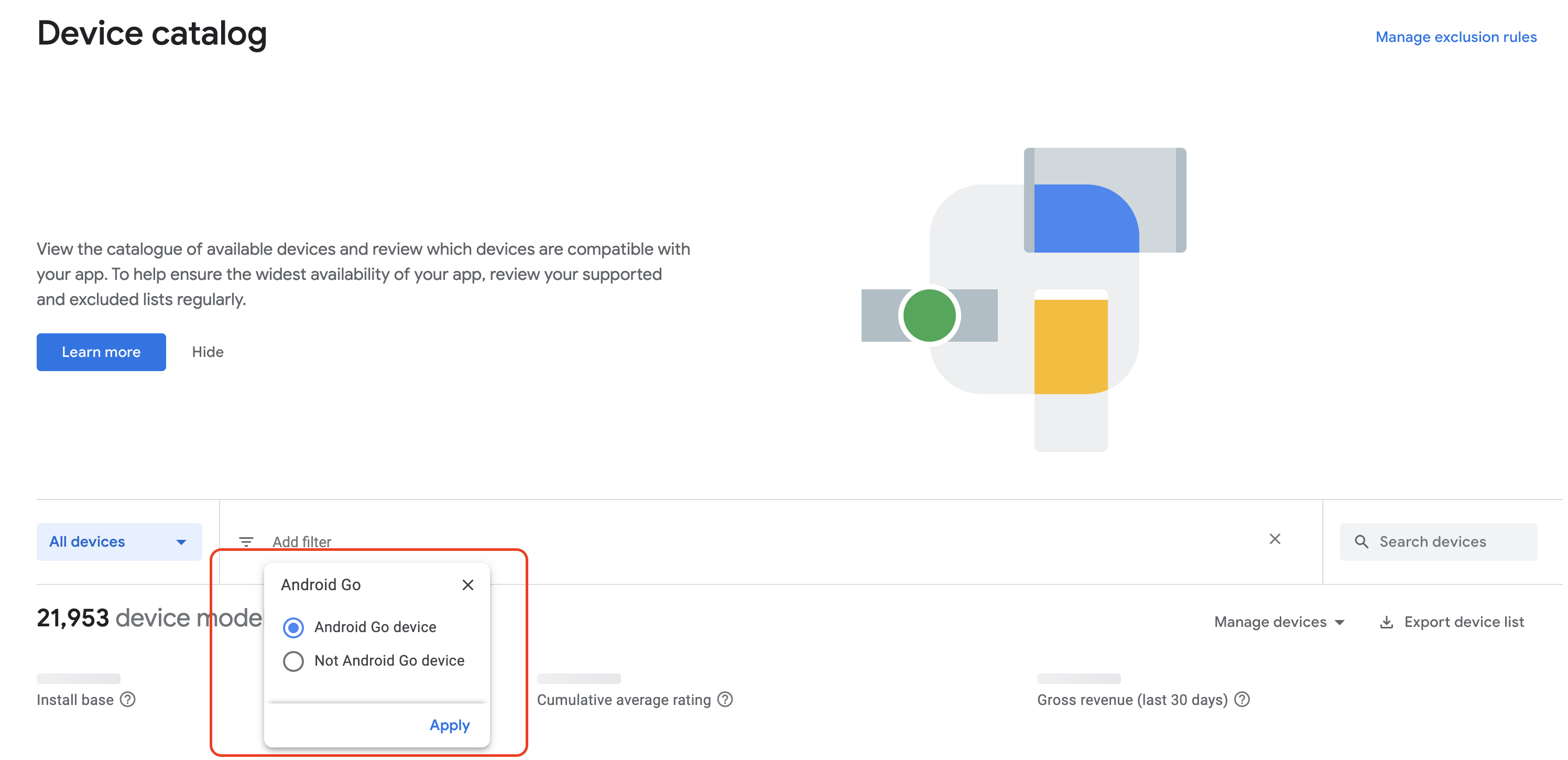与在 Android 平台上运行的设备类似,Go 设备上的应用也应为最终用户提供优异性能。有一些方法可以最大限度地减少对资源(例如 CPU、内存、显卡、网络或设备电池)的低效使用。
如需解决性能问题,可以使用性能分析和基准化分析工具,以及在分析应用性能部分针对 Android 提供的指导。
测试要求
在对 Android(Go 版本)应用进行性能分析和测试时,请谨记以下几条重要准则:
- 在支持 Android 8.1(API 级别 27)或更高版本的设备上进行测试。最好使用真实设备(如果可能)而不是模拟器,因为 CPU 性能可能会影响结果。
- 通过 Android Studio 内存分析器或 Perfetto 等工具监控 RAM 使用情况,以便跟踪内存使用量。识别内存泄漏和内存抖动有助于减少应用崩溃和总体卡顿。
- 如需根据某些系统限制逐步释放内存,可以实现
onTrimMemory。此回调允许应用释放资源,以帮助提升系统的总体响应速度,并且还允许系统延长您的进程的活跃时间,从而直接改善最终用户的体验。如需了解详情,请参阅有关ComponentCallbacks的文档。
- 如需根据某些系统限制逐步释放内存,可以实现
- 确保停用 Android(Go 版本)不支持的所有功能。
适用于 Go 设备的 Android Vitals
如需查看适用于在 Android(Go 版本)设备上运行的应用的 Android Vitals 统计信息,请前往 Google Play 管理中心并设置以下过滤条件和设备配置:
- 设备类型:Android Go
- Android 版本:8.1 及更高版本
- RAM:2GB(从 Android 13 [API 级别 33] 开始)。如需查看设备和硬件规格的完整列表,请参阅最低硬件规格。

如需查看专门在 Android(Go 版本)设备上运行的任何应用,您可以在设备目录中应用 Android Go 过滤器,如图 2 所示。

